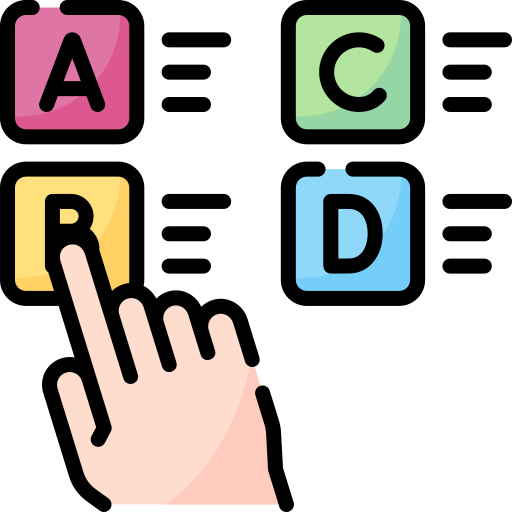Are you tired of constantly facing challenges in your team's performance?

Apply this 5-step process of problem-solving strategies to help transform your team's performance and create a work environment that breeds success.
Step 1: Define the Problem

To improve team performance, it's crucial to clearly define the problem or challenge at hand. This helps ensure everyone is on the same page and understands the issue that needs to be addressed.
Explaining the problem clearly will help your team find a solution.

Step 2: Gather Information and Analyze the Situation

It's important to collect relevant information to understand the problem deeply. Make sure everyone talks openly within the team.
Gather the data, seek different perspectives, and consider any relevant facts or insights. This information will give you a better understanding of the problem and help generate effective solutions.

Break down the problem into its basic parts, then identify the root causes that affect team performance.
Analyzing the situation will help your team find and address the obstacles blocking your team's success.
Step 3: Generate Solutions and Evaluate Options

Brainstorm a range of potential solutions as a team. Encourage creativity and diverse perspectives during this process.
 For each possible solution:
For each possible solution:
Assess its potential impact
Consider resources, time, and potential risks
Evaluate the pros and cons
This step of the problem-solving strategy will help you determine which options are most likely to improve team performance.
 Photo by Per Lööv on Unsplash
Photo by Per Lööv on UnsplashStep 4: Select an Action Plan

Pick the best solution(s) that make the most sense from all the ideas. Make a clear action plan that lays out what needs to be done, who's responsible for what, and what your team wants to achieve.
Make sure everyone on the team knows their role and is totally on board with the plan.
 Photo by Glenn Carstens-Peters on Unsplash
Photo by Glenn Carstens-Peters on UnsplashStep 5: Implement the Solution, Evaluate, and Learn

Share the plan with your team and give them enough resources to carry it out. Keep an eye on how things are going, tackle any problems that pop up, and offer help when needed.

Keep checking if the solution is working well. Get feedback from your team and the people involved to see how the team is doing.
Use that feedback to find areas where you can get even better and make changes when needed. Make sure the team is learning and growing so they can keep improving.
Case Study
 Photo by Artem Beliaikin on Unsplash
Photo by Artem Beliaikin on UnsplashImagine you're an assistant store manager leading a team in a retail fashion. Your team is consistently falling short of meeting sales targets. Apply these problem-solving strategies to improve your team performance:

Define the Problem
You noticed that the staff are unable to close the deals successfully, leading to lower sales figures and reduced customer satisfaction.

Gather Information and Analyze the Situation
Collect sales data, observe staff interactions with customers, and seek feedback from both employees and customers.
Through analysis, you discover that the sales staff lacks adequate product knowledge, struggles with handling difficult customers, and may not be engaging customers effectively.

Generate Solutions and Evaluate Options
Brainstorm potential solutions with the team, such as:
Provide comprehensive product training sessions.
Conduct workshops or role-playing exercises.
Implement a performance-based incentive program.
Consider available resources (such as training materials), and estimate the benefits and costs of each solution. Prioritize options that have the potential to boost sales performance effectively.

Select an Action Plan
Choose a comprehensive action plan that includes multiple solutions:
Schedule regular product training sessions to improve the sales staff's product knowledge and confidence.
Organize workshops or role-playing exercises to enhance objection handling and customer engagement skills.

Implement the Solution, Evaluate, and Learn
Provide necessary resources to support the training or workshops. Regularly monitor the progress, and address any challenges or roadblocks that arise.
Continuously assess the effectiveness of the implemented solutions by monitoring sales figures and customer feedback. Gather feedback from the sales staff to understand their experience and any further areas for improvement.
By applying these problem-solving strategies, the sales team can work towards improving their sales performance and enhancing customer engagement.
Quiz: Project Deadlines

Imagine that you're the team lead of a marketing department in a rapidly growing startup. Your team has been struggling with meeting project deadlines, resulting in delayed marketing campaigns and missed opportunities.
After analyzing the situation, you have identified poor communication and unclear roles and responsibilities as the key factors contributing to the problem.
You come up with a few problem-solving strategies below and it's your turn to make a decision!
A. Implement a more structured project management approach.
B. Conduct training sessions on time management.
C. Hire additional team members to reduce their workload.
D. Redefine the team's goals and objectives.
Quiz
Which solution would best address the team's challenges?
Take Action

The next time your team is having performance problems, use this 5-step process of problem-solving strategies to help them improve!
Your feedback matters to us.
This Byte helped me better understand the topic.
